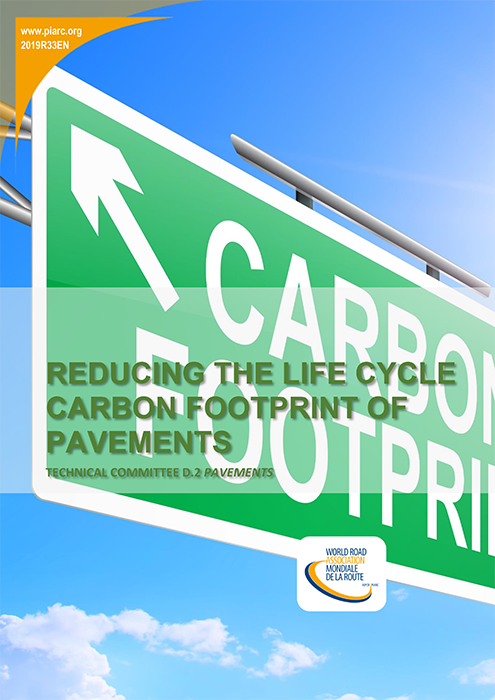Reducing the Life Cycle Carbon Footprint of Pavements - Technical Report

This report reviews innovations reported to reduce the carbon footprint of pavements and contains a critical review of the assessment of carbon footprint of pavements. There are numerous other environmental indicators for road pavements, but these were outside the scope of this report which focuses only on the carbon footprint.
The strategic objectives established for the working group were as follows:
- review field feedback on recent innovations (products, equipment) which contribute to reduce the carbon footprint in pavements. This will include in particular warm asphalt concrete technologies;
- critical review of the assessment of reductions in the carbon footprint as compared to standard methods of construction including the use of reused, recycled and recovered materials.
In this report the definition of sustainability of road pavements is discussed, including a definition of system boundaries and allocation methodology as well as a comparison of several models currently available for assessment of environmental endpoints.
A questionnaire was sent to PIARC members and the results are summarised within the report. It is noted that, whilst a number of the technologies reported by respondents are likely to be favourable in respect of sustainability, they do not necessarily reduce the carbon footprint of the road pavement. Moreover, in most of the examples provided, no supporting data were provided to demonstrate that the innovations reported did indeed reduce the carbon footprint.
The responses to the questionnaire suggest that there are few incentives provided by road owners to reduce the carbon footprint of pavement construction. However, some technologies in use might lead to cost reduction for the manufacturers of pavement materials due to fuel savings or the use of recovered, or recycled materials.
It is recommended that future PIARC activity should consider environmental endpoints other than carbon footprint.
Future studies should take into account potential benefits from the pavement in reducing vehicle emissions, such as reduced rolling resistance.
Information sheet
- Date: 2019
- Author(s): Comité technique / Technical Committee / Comité Técnico D.2 Chaussées / Pavements / Firmes de Carretera
- Domain(s): Environment / Road Pavements
- Type: Technical Report
- PIARC Ref.: 2019R33EN
- ISBN: 978-2-84060-568-3
- Number of pages: 64